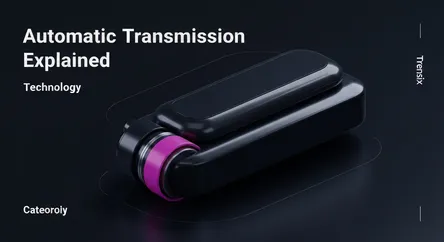Technology
Automatic Transmission Explained

Discover what an automatic transmission is, how it works, and why it's a dominant technology in modern cars, making driving easier and more efficient.
What is it?
An automatic transmission is a vehicle gearbox that automatically changes gear ratios as the vehicle moves, freeing the driver from manually shifting. Instead of a clutch pedal, it typically uses a torque converter and planetary gearsets to transfer power. Modern variations include the Continuously Variable Transmission (CVT), which offers seamless ratio changes for peak efficiency, and the fast-shifting Dual-Clutch Transmission (DCT), popular in performance cars for its rapid gear changes.
Why is it trending?
The trend is driven by convenience and efficiency. Automatic transmissions make driving simpler, especially in congested urban traffic. While early automatics were less fuel-efficient, modern technology has flipped the script. Advanced systems like DCTs and CVTs often provide better fuel economy and faster acceleration than manual gearboxes. The shift toward electric vehicles, which use single-speed transmissions, has also accustomed drivers to a clutch-free experience, solidifying the automatic as the modern standard.
How does it affect people?
For most drivers, an automatic transmission provides a more relaxed and accessible driving experience, reducing fatigue during commutes. This simplicity has made it the default choice in many global markets. For enthusiasts, modern automatics with paddle shifters offer performance that can even surpass a manual transmission. The main trade-off is their complexity, which can lead to higher initial costs and potentially more expensive repairs. However, for the majority of buyers, the sheer ease of use makes it the preferred option.